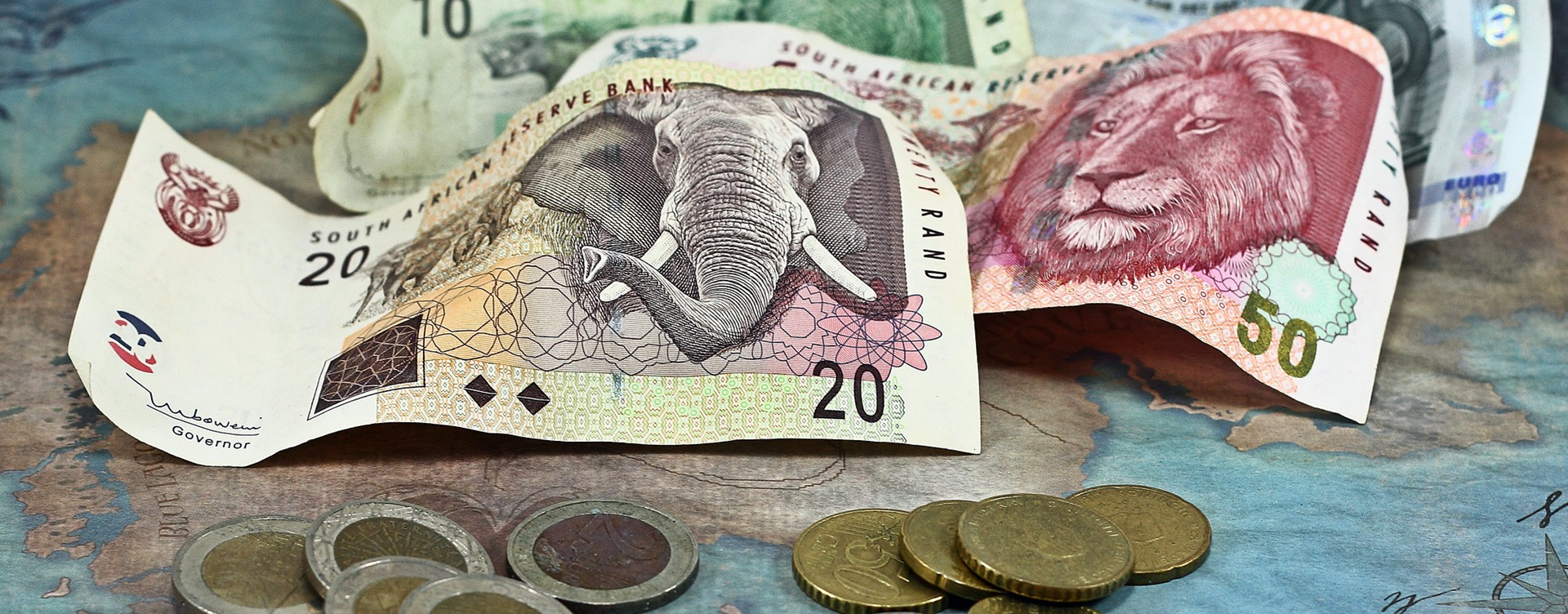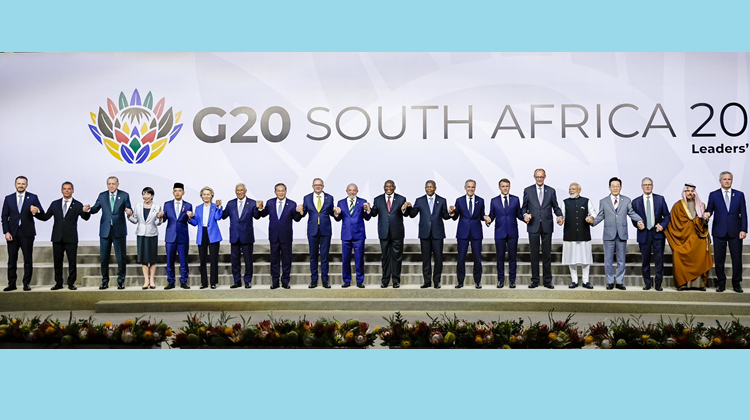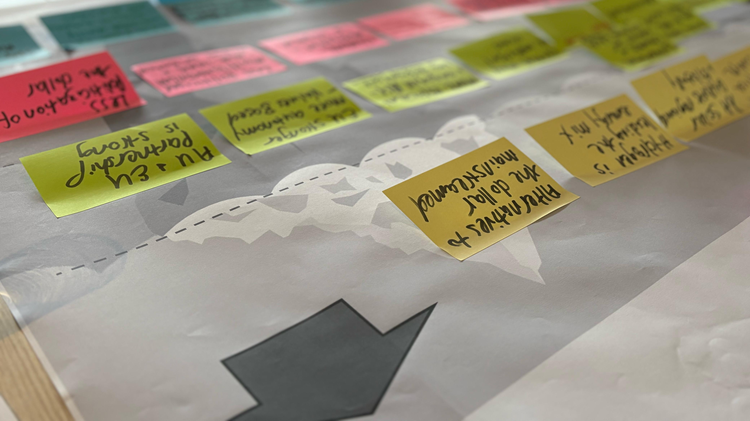Financing Africa’s growth

Rethinking international partnerships is crucial to addressing Africa’s debt crisis, unlocking sustainable growth, and reducing poverty and inequality.
Africa’s debt is rising approximately four times faster than its economic growth, jumping ten percentage points from 2010 to constitute 29% of GDP by 2022. This alarming trajectory underscores the urgency of rethinking how international partnerships can better support the continent’s progress towards the Sustainable Development Goals (SDGs) by 2030. As the global balance of power shifts, Africa’s demographic dividend and resource wealth position it as a pivotal actor in shaping a fair and inclusive multipolar world.
According to the Organisation for Economic Co-operation and Development (OECD), a debt threshold range of 70 to 90% of GDP is appropriate for high-income countries such as the US and Japan, and 30 to 50% for emerging economies, including Africa’s 46 low- and lower-middle-income economies. The OECD further recommends that a prudent debt target should average 15 percentage points below the debt threshold since exogenous events, such as COVID-19 or Russia’s invasion of Ukraine, could push up interest rates. Thus, according to the OECD, most African countries can only sustain debt levels of 15 to 35% of GDP.
However, many African countries have consistently exceeded these levels due to high borrowing costs, currency volatility and slow growth. For instance, according to the UN Conference on Trade and Development (UNCTAD), African countries face financing costs averaging 8.5 percentage points higher than the US rate, with some nations such as Tunisia and Nigeria effectively shut out of financial markets due to prohibitive costs.
According to the OECD, most African countries can only sustain debt levels of 15 to 35% of GDP
Africa’s infrastructure financing gap is immense, with growing demands for schools, hospitals and transportation systems driven by population growth. Domestic revenue mobilisation remains low, leaving many countries reliant on external borrowing. Although tax revenue mobilisation performance varies widely across African countries, Africa’s average tax-to-GDP ratio of 16.5% is lower than other regions such as Asia and the Pacific (19.1%), and Latin America and the Caribbean (21.9%). It is 33.5% in the OECD countries. Government expenditure is often also unproductive, reflected in the low measure of government effectiveness as measured by the World Bank, and high levels of corruption as reflected in data from Transparency International and others.
Trapped on the horns of a dilemma that requires high levels of government expenditure to fund its development and unable to fund that domestically, Africa increasingly turns to private creditors and China instead of concessional financing from International Financial Institutions (IFIs), which often involve cumbersome conditions.
There is no silver bullet to this dilemma. It requires a host of responses starting with improving the quality of domestic governance, extending all the way to restructuring the voting rights within the IFIs. Africans need to be able to afford much higher debt levels (at least 50 to 60% of GDP) which need to be available at very low, concessional rates; meaning someone, somewhere needs to offset the additional risk premium. Who will grasp this nettle? How can we engineer a common approach to Africa’s development dilemma that includes China, the West, private bondholders and development banks?
This dilemma requires a host of responses starting with improving the quality of domestic governance, extending all the way to restructuring the voting rights within the IFIs
To some degree financial engineering could be used ‘to contain a surge in borrowing costs without taking on more debt from official lenders’, notes the Financial Times. For example, recently the World Bank announced that it will underwrite a loan to Côte d’Ivoire to replace costly bonds. Through this ‘debt for development’ swap, the country will use cheap financing to back close to 400 million Euros in bonds that will be up for repayment in the next few years and put the savings into public spending.
Reimagining International Partnerships
Africa’s development pathway requires bold international cooperation that acknowledges the continent’s unique challenges and opportunities in a multipolar world. An international partnership framework must be built on principles of mutual accountability, transparency, sustainability, and equitable risk-sharing between all creditors and debtors. Here are three key strategies for a visionary global framework:
1. Restructuring International Financial Institutions (IFIs):
Africa’s voice must be amplified in decision-making processes at the IMF, World Bank, and other multilateral lenders. This involves revising voting rights to reflect Africa’s growing significance and ensuring that risk assessments by agencies like Moody’s, Standard & Poor’s and Fitch are objective, rational and unbiased. A dedicated African Sovereign Rating Agency could address some of these concerns but it is likely that Western companies and countries would continue to rely on information from agencies that they know and trust, yet there may be ways in which the use of a spread of Agencies could be negotiated. Additionally, IFIs must scale up concessional financing for Africa, offering loans at significantly lower rates to enable sustainable borrowing.
2. Establishing a Global Compact on Africa’s Development:
A global compact, endorsed by leading economies and regional organisations like the African Union, should mobilise funding for critical infrastructure projects. This compact must involve a mix of grants, concessional loans and private-sector investment guarantees, with clear accountability mechanisms. Development aid could be used to subsidise the risk premiums associated with lending to African economies and investments in projects in Africa. Partnerships must also tap into Africa’s diaspora, through innovative tools like diaspora bonds to fund critical development projects. Annual remittance flows to Africa already exceed aid at more than US$50 billion.
3. Promoting Economic Diversification and Value Addition:
International partnerships should prioritise support for Africa’s transition from commodity exports to value-added industries. This includes investments in technology transfer, capacity building and market access initiatives to ensure that Africa captures greater value from global trade. Regional trade agreements like the African Continental Free Trade Area (AfCFTA) must move to full implementation to strengthen intra-African trade. A single-commodity-based economy is, for example, very vulnerable to price swings. Yet, Africa is today more commodity-dependent than ever and the quality of governance is declining.
Looking Ahead
Achieving the SDGs by 2030—and setting the stage for Africa’s Agenda 2063—requires transformative action. Beyond financing, Africa’s success hinges on fiscal discipline, political stability and enhanced domestic governance. However, immediate relief lies in creating equitable international partnerships that address the continent’s specific needs. Africa’s prosperity benefits everyone, and the current prospects of a growing divide between Africa and income averages elsewhere will eventually be a threat to global stability and prosperity and will accelerate climate change given the inevitable large increases in the continent’s carbon emissions that will accompany economic growth. A prosperous and stable Africa will contribute to global security, reduce irregular migration and expand trade opportunities, benefiting the entire world.
Immediate relief lies in creating equitable international partnerships that address the continent’s specific needs
The motivation for achieving this is clear: our forecasts, using the International Futures forecasting platform, show that the average economic growth rate for Africa for the next ten years is a measly 4.2%. Since the continent’s population is expected to grow at 2.4%, this translates into GDP per capita growth at less than one per cent per annum. The implication is, that by 2030, 454 million Africans (or 26% of the continent's population) will still live in extreme poverty.
Image: Sue Thompson/Flickr






